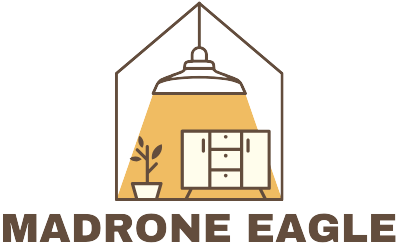In a world where privacy is king, the quest for a locked folder on an iPhone feels like searching for the Holy Grail. Imagine a digital fortress where your most sensitive photos, notes, and secrets can hide from prying eyes—sounds dreamy, right? Whether it’s that embarrassing selfie or a top-secret grocery list, keeping things under wraps has never been more essential.
But can you really create a locked folder on your iPhone? Spoiler alert: it’s not as straightforward as finding the nearest coffee shop. Apple has some nifty features up its sleeve, but it might not be the “fortress” you envisioned. Get ready to dive into the world of iPhone privacy, where you’ll discover how to keep your digital life safe while still enjoying a good laugh along the way.
Table of Contents
ToggleOverview Of Locked Folders
Creating a locked folder on an iPhone addresses the pressing need for privacy. Users often seek ways to safeguard sensitive content like photos and notes. A locked folder can serve as a secure space for storing personal information, offering peace of mind.
The iPhone provides several security features to help protect data. For instance, users can utilize the Notes app, which allows locking individual notes with a password or Face ID. Photos can also be hidden, but they remain accessible unless users take additional steps. Enabling these functionalities boosts privacy substantially.
Some third-party applications offer locked folder features as well. These apps provide added layers of security, catering to users who desire more control over their data. Popular apps such as KeepSafe and Private Photo Vault allow for more comprehensive privacy management.
Operating system updates sometimes introduce new privacy options. Users should regularly check for updates, as Apple frequently enhances its security protocols. Each new version might add features making it easier to maintain privacy.
Ultimately, while a fully dedicated locked folder does not exist on the iPhone, various existing features can be combined to create a similar level of protection. Understanding how to leverage the iPhone’s built-in capabilities ultimately leads to improved data security and increased user confidence.
How To Create A Locked Folder On iPhone
Creating a locked folder on an iPhone enhances privacy. Users can utilize built-in apps and third-party solutions for better protection of sensitive data.
Using The Notes App
The Notes app allows users to lock individual notes for added security. To lock a note, open the desired note, tap the share icon, and select “Lock Note.” Users can then set a password or enable Face ID for quick access. Locked notes appear with a locked icon, preventing unauthorized access. Accessing a locked note involves tapping the lock icon and entering the password or using Face ID. This method offers a straightforward way to safeguard personal information like thoughts and lists.
Using Third-Party Apps
Third-party apps provide additional options for creating locked folders. Applications such as KeepSafe and Private Photo Vault allow users to store photos in a secure location. After downloading, users can set up a passcode or use biometric authentication. Such apps often include features like decoy modes and secure cloud backups, enhancing overall security. These solutions enable a more personalized approach to privacy, ensuring that sensitive images stay protected from prying eyes.
Benefits Of Using Locked Folders
Locked folders provide essential privacy for sensitive information. Users gain the advantage of safeguarding their personal data from unauthorized access.
Enhanced Privacy
Enhanced privacy features offer robust protection for content stored in locked folders. By using tools like password protection or biometric authentication, individuals ensure that only they can access valuable information. Photos, notes, and documents become shielded from prying eyes. Utilizing locked folders reduces the chances of accidental sharing during social interactions or while lending devices. Security enhancements make it challenging for others to compromise personal data, allowing peace of mind while using an iPhone.
Organization Of Sensitive Information
The organization of sensitive information benefits significantly from locked folders. Users can categorize and prioritize private content in a secure space. Keeping critical files together streamlines access while still maintaining a high level of security. In addition, retrieving essential documents or images becomes quicker and more efficient. Storing personal items separately from everyday content helps prevent clutter and confusion. An organized approach to sensitive information reinforces the importance of privacy in an increasingly digital world.
Limitations And Considerations
Creating a locked folder on iPhone presents several limitations and considerations that users must keep in mind. First, built-in iOS privacy features offer some protection but lack a dedicated locked folder option. Users often find that while they can lock individual notes, this doesn’t extend to other types of files and folders.
Second, hiding photos in the Photos app doesn’t remove them from general access. Even when marked as hidden, these images are still retrievable through other means. This lack of complete privacy may leave sensitive content exposed if users don’t follow additional steps.
Third, utilizing third-party applications can enhance privacy but introduces new risks. Users must navigate app permissions and ensure that the chosen application maintains a strong security reputation. Security breaches in less reputable apps may expose personal data, highlighting the need for careful selection.
Next, regular operating system updates from Apple might change the landscape of privacy features. New enhancements could emerge that either improve security or add new complexities. Staying informed about these updates ensures users can take full advantage of evolving privacy tools.
Moreover, the effectiveness of individual security measures depends on user diligence. Without strong passwords or consistent use of biometric authentication, sensitive data remains vulnerable. Users should prioritize the organization of private content to mitigate risks, as a cluttered system often leads to oversight.
Finally, while users can combine various features and third-party solutions, achieving a comprehensive locked folder experience may still feel inadequate. Understanding these limitations empowers users to make informed choices about their privacy strategies on iPhone.
Creating a locked folder on an iPhone may not be straightforward but users have options to enhance their privacy. By utilizing built-in features like locking notes and hiding photos alongside trusted third-party apps, individuals can better protect their sensitive information.
It’s crucial to stay informed about updates from Apple as new privacy features may emerge. Users should also remain vigilant in their security practices. While a dedicated locked folder isn’t available, combining existing tools can significantly improve data security and user confidence.




